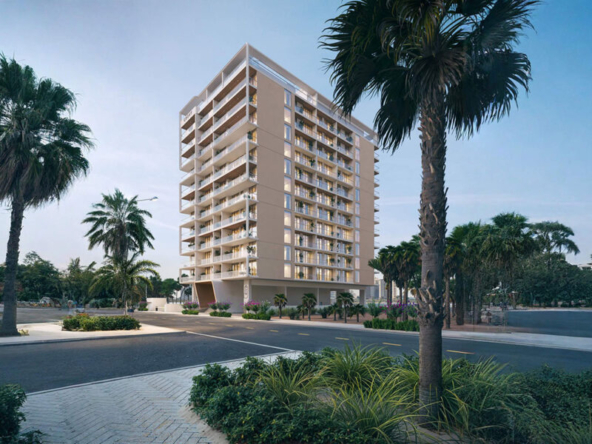Introduction to the Dubai Metro Blue Line Project
Dubai is once again taking a massive leap toward futuristic urban transformation with the announcement of the Dubai Metro Blue Line. Designed as a major enhancement to the city’s already robust transportation network, this new metro extension is poised to revolutionize real estate development, urban mobility, and socio-economic dynamics across key districts. The Blue Line will connect five major urban areas and is expected to become a catalyst for real estate investment and community development.
Overview of the Dubai Metro Blue Line Route
The Blue Line is planned to span 30 kilometers, comprising 14 stations—3 underground and 11 elevated. This route will link International City, Dubai Silicon Oasis, Mirdif, Al Warqa, and Dubai Creek Harbour, all the way to Dubai International Airport (DXB), enhancing both commuter accessibility and airport connectivity.
Strategic Importance of Key Stations
-
International City Station: A game-changer for affordable housing zones.
-
Dubai Silicon Oasis Station: Will empower tech startups and digital commerce hubs.
-
Dubai Creek Harbour Station: Boosting high-end residential projects and tourism.
-
Airport Interchange: Integrating air travel with seamless urban mobility.
These stops are not just transit points—they are future growth corridors that will attract investors, developers, and businesses alike.
Impact on Dubai Real Estate Market
Increased Demand in Blue Line Catchment Areas
The announcement has already begun to inflate land values along the proposed route. Properties in Dubai Silicon Oasis, Al Warqa, and Mirdif are experiencing a spike in inquiries and investor interest. These areas offer a mix of mid-income to luxury housing, making them ideal for a broad demographic of homebuyers and tenants.
Key Real Estate Zones Benefiting from the Blue Line
-
Dubai Creek Harbour: This area is witnessing a surge in off-plan property sales. Developers like Emaar are leveraging the transit-oriented development model to build premium towers with panoramic views and integrated retail zones.
-
Mirdif: Known for its family-friendly ambiance, Mirdif is set to become a commuter’s paradise, thanks to its metro access and proximity to Dubai International Airport.
Transit-Oriented Development (TOD)
The Blue Line supports the Transit-Oriented Development (TOD) model, which places high-density residential, retail, and commercial spaces within a walkable radius of transit hubs. This approach reduces car dependency, increases property appreciation rates, and enhances the livability quotient.
Urban Connectivity and Mobility Enhancement
Intermodal Transportation Integration
The Blue Line seamlessly integrates with existing Red and Green Metro Lines, forming an extensive metro grid. This interconnectivity enables:
-
Quicker commutes to business hubs like DIFC and Downtown Dubai.
-
Fewer traffic bottlenecks on arterial roads like Sheikh Mohammed bin Zayed Road and Emirates Road.
-
Better logistics and delivery efficiencies for e-commerce and retail sectors.
Boost to Smart Mobility Initiatives
Dubai’s Smart City vision aligns perfectly with the Blue Line. Equipped with AI-powered control systems, smart ticketing, and real-time passenger information displays, the metro line contributes directly to sustainable urban planning and tech-forward governance.
Economic Growth Catalyzed by Infrastructure Investment
The estimated investment for the Blue Line is around AED 18 billion, making it one of the most significant infrastructure projects post-Expo 2020. This expenditure will:
-
Create thousands of jobs during construction and operation.
-
Stimulate GDP growth through increased real estate transactions.
-
Encourage foreign direct investment (FDI), especially in logistics and property sectors.
Public-Private Partnerships (PPP) in Metro Development
The Dubai government is expected to collaborate with private infrastructure firms and global transit specialists through Public-Private Partnerships (PPP). This strategy will not only reduce financial risk but also ensure world-class execution and maintenance of metro systems.
Sustainability and Environmental Benefits
Reduction in Carbon Footprint
With the ability to carry over 500,000 passengers per day, the Blue Line will significantly reduce vehicle usage, thereby cutting down greenhouse gas emissions. Real estate developers are also adopting green building practices in anticipation of higher footfalls.
Eco-Friendly Real Estate Projects
Developers along the Blue Line route are incorporating:
-
LEED-certified buildings
-
Vertical gardens and green rooftops
-
Smart waste management systems
These initiatives align with Dubai’s 2050 Net Zero Strategy and bolster the city’s image as a global sustainability leader.
Projected Timeline and Development Phases
The Dubai Metro Blue Line is scheduled for completion by 2029, with the groundwork and planning stages already in motion. The Roads and Transport Authority (RTA) has divided the development into three major phases:
-
Feasibility and Design (2024–2025)
-
Construction and Track Installation (2026–2028)
-
Testing, Trials, and Public Launch (2029)
Investment Opportunities and ROI Forecast
Real Estate Investors
Property near metro lines in Dubai has historically offered 30–40% higher rental yields compared to non-metro zones. With early investment in off-plan projects along the Blue Line, investors can expect:
-
Capital appreciation up to 25% by 2030
-
Higher rental occupancy due to improved mobility
-
Lower tenant turnover rates
Retail and Commercial Developers
Retail giants and SME brands can benefit from transit-adjacent retail spaces, which promise increased foot traffic and better customer retention.
Final Thoughts: A Transformative Leap for Urban Dubai
The Dubai Metro Blue Line is more than just a transportation project—it’s a strategic enabler of urban prosperity, economic growth, and real estate evolution. As construction progresses, expect the surrounding districts to mature into highly sought-after property hotspots, bridging liveability, affordability, and connectivity.
Investors, developers, and residents are all set to benefit from this transformational infrastructure initiative, which solidifies Dubai’s position as a global benchmark for smart, sustainable urban living.




